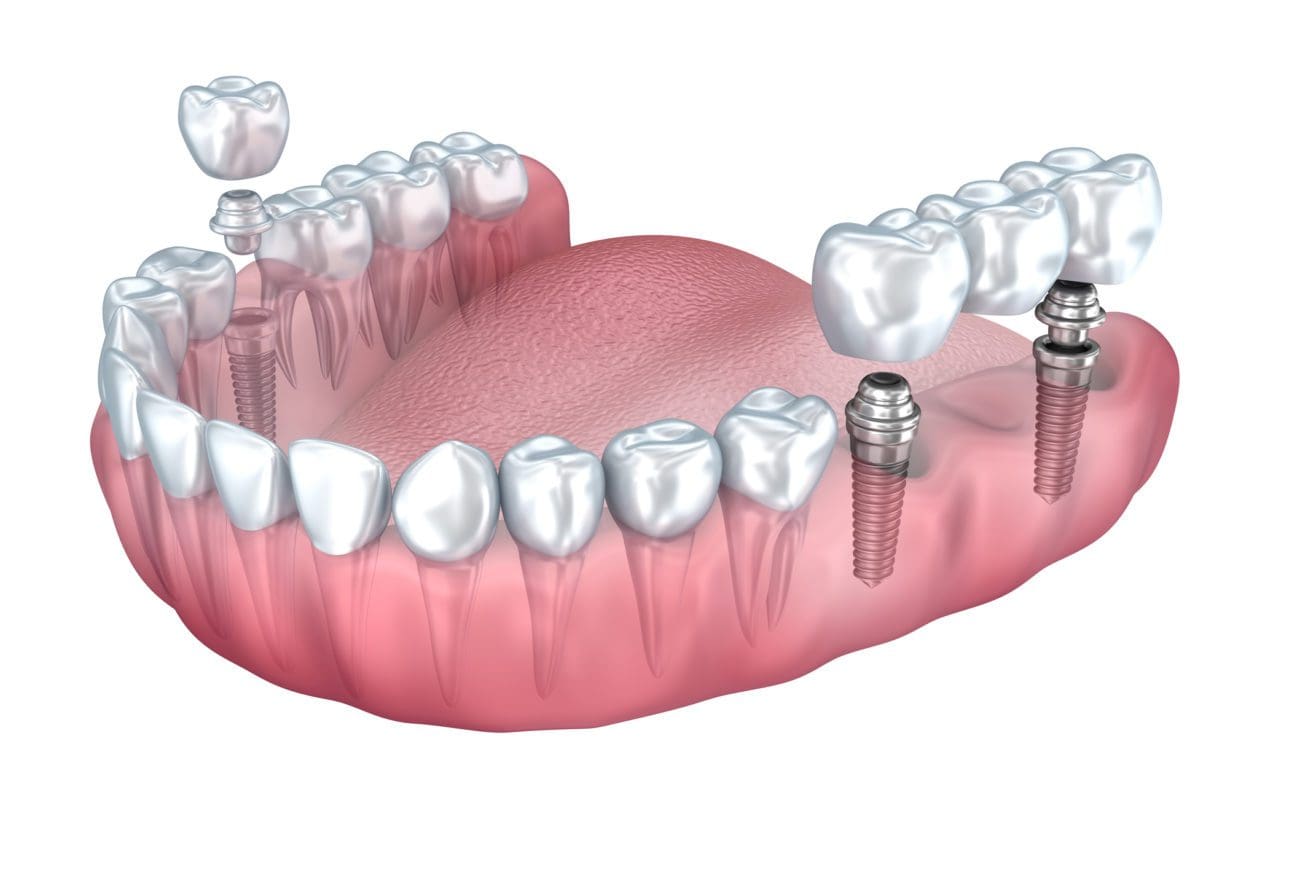The Facts About Dental Sense Uncovered
The Facts About Dental Sense Uncovered
Blog Article
Our Dental Sense Diaries
Table of ContentsDental Sense Things To Know Before You Get ThisThe Buzz on Dental SenseDental Sense for BeginnersEverything about Dental Sense
are clinical devices operatively dental implanted right into the jaw to restore an individual's ability to eat or their appearance. They provide support for synthetic (phony) teeth, such as crowns, bridges, or dentures. When a tooth is shed as a result of injury or condition, a person can experience issues such as quick bone loss, defective speech, or changes to chewing patterns that cause discomfort.Dental dental implant systems are composed of an oral implant body and dental implant abutment and might additionally include an abutment fixation screw. Front tooth filling. The dental implant body is operatively inserted in the jawbone instead of the tooth's origin. The oral implant abutment is typically connected to the implant body by the abutment fixation screw and extends through gum tissues into the mouth to sustain the connected artificial teeth
(https://go.bubbl.us/e7bebd/a315?/Dental-Sense)Framework of The Dental Implant System choosing dental implants, speak to your oral company regarding the possible advantages and risks, and whether you are a candidate for the treatment. Things to consider: Your total health is a vital factor in identifying whether you are an excellent prospect for dental implants, just how long it will take to heal, and how much time the dental implant might remain in location.
Smoking cigarettes might affect the healing procedure and lower the long-term success of the dental implant. The healing process for the dental implant body might take a number of months or longer, during which time you normally have a short-lived joint instead of the tooth. the dental implant procedure: Thoroughly comply with the oral hygiene instructions provided to you by your dental provider.
Getting My Dental Sense To Work
Implant failing can result in the requirement for an additional surgery to deal with or replace the implant system. Brings back the capability to chew Restores aesthetic appearance Helps maintain the jawbone from diminishing because of bone loss Preserves the health of the surrounding bone and periodontals Assists maintain adjacent (neighboring) teeth secure Boosts lifestyle Damage to bordering all-natural teeth throughout implant placement Injury to the surrounding tissues during surgery, such as sinus opening Injury during surgical treatment (as an example, crack of bordering jawbone) Poor function, such as seeming like the teeth do not attack together normally A feeling that the tooth is loosened or twisting in place arising from an abutment screw loosening Implant body failure (looseness of the dental implant body) due to systemic infection, which may be more probable in individuals with unchecked diabetes because of neighborhood infection in bone and gum tissues supporting the dental implant body because of delayed healing, which might be more likely in individuals that smoke Difficulty cleansing the gums around the implant, resulting in poor oral health Untreated gum illness Post-surgical pins and needles due to nerve impingement or damage Always alert health treatment providers and imaging technicians that you have oral implants before any kind of magnetic resonance imaging (MRI) or x-ray procedures.
FDA is not familiar with any unfavorable events reported for MRI or x-ray procedures with oral implants. Dental implants systems are normally constructed from products that adhere to worldwide agreement requirements of the International Organization for Standardization (ISO) or ASTM International. These requirements have details of what makes a safe material.

An oral implant is a structure that changes a missing tooth. With screw-like gadgets, the surgeon inserts an implant into the jawbone, and it functions as an anchor for a fabricated tooth, called a crown. A gadget called a joint links the over here synthetic tooth to the oral implant. The crown is custom-made to fit the individual's mouth and match the shade of their teeth.
The Of Dental Sense
Some people are not qualified for dental implant surgical treatment. It is for dental specialists to operate on individuals with: intense illnessuncontrollable metabolic diseasebone or soft tissue illness or infectionIf these issues are settled, a person can have the surgery. In, dental specialists refrain from operating people with: If people with any of the above go through oral implant surgery, there is a greater threat of the dental implant failing.

Dental implant surgical procedure is a customized process. It's not the very same for every person. But the following provides a general overview of what you can expect your dental professional, oral doctor, periodontist or prosthodontist to do: Place the dental implant surgically. Offer you time to recover. Attach the message and last crown, bridge or denture.
Next, your doctor will thoroughly put the oral implant into your jaw. If your dental implant is near the front of your mouth, your dental professional will certainly make a momentary tooth for you to use till you heal.
Getting My Dental Sense To Work
Your supplier can tell you what to anticipate in your scenario. During the healing phase, your jawbone needs to fuse to the dental implant. This procedure, called osseointegration, is essential for security and lasting success. This process can take anywhere from three to nine months. Sometimes, it may take much longer.
When your dental implant heals, your dental professional can connect the abutment (little port article) and your final remediation (crown, bridge or denture). This typically takes concerning one hour to complete and may require a 2nd small surgical procedure. You shouldn't really feel any type of discomfort during your dental implant procedure because your service provider will make use of medication to numb your periodontals.
Report this page